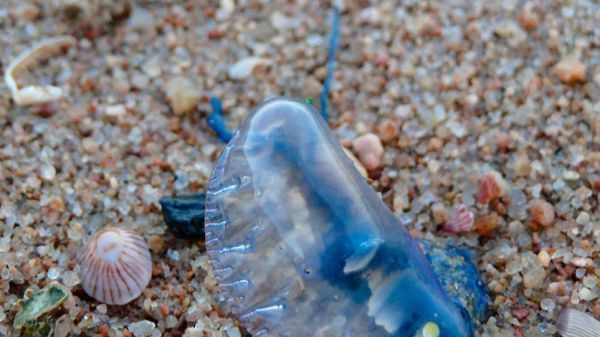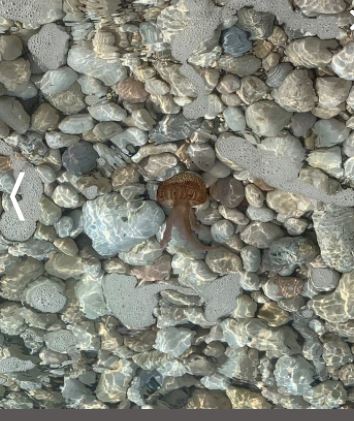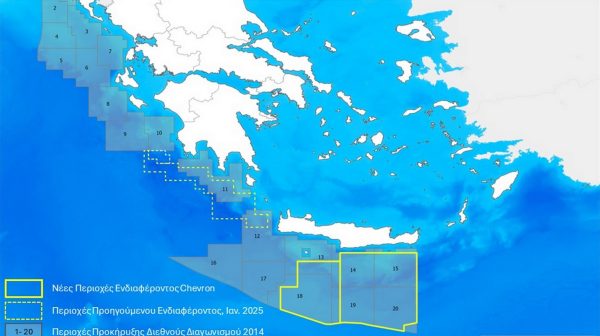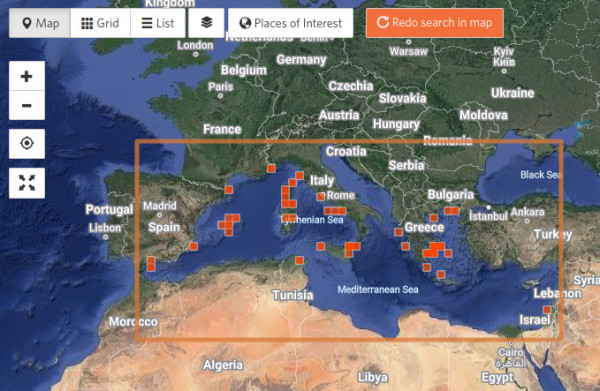
Of particular concern is the spread of purple jellyfish in the Greek seas, as according to the Hellenic Biodiversity Observatory “the movements of jellyfish we observed in winter have verified us and the spread of purple jellyfish in the Ionian Sea from the beginning of April is confirmed”.
Where they have been located
According to the Observatory, purple jellyfish have already been recorded in Zakynthos, Paxos, Antipaxos, Cephalonia, Amvrakikos gulf and Corfu.
It is worth noting that experts report that in the coming days the problem will begin to intensify especially in the Ionian.

One of the most dangerous species of jellyfish
The purple jellyfish (Pelagia noctiluca) is considered one of the most dangerous species of jellyfish in the Mediterranean.
Its sting is painful because of the neurotoxin released.
It is recognizable by its four main and eight longer and thinner tentacles, along with a dotted “hat” and purple interior, while it has a usual diameter of 6-10 cm.
When it is young its color is orange-brown and when it grows up it takes on this intense mauve-purple color.

Purple jellyfish in Paxos on 24/5 – Photo by Hellenic Biodiversity Observatory
The purple jellyfish is found at depths from 0 to 1600 meters. It feeds mainly on sea breams, various shellfish, plankton crustaceans and fish eggs.
The largest natural predators of the jellyfish are the Skin Turtle, the Caretta Caretta, the Tuna, the Swordfish and the Moonfish.
Purple jellyfish all over the Mediterranean
According to the observatory, the problem of the spread of the outbreak of purple jellyfish (Pelagia noctiluca) is not only in the Ionian. Last summer we had a boom in the Aegean, Spain and France.
This year the problem is now almost over the whole Mediterranean, from Portugal in the west to Israel in the east and south in most African countries. While nothing may have been mentioned so far about sightings in the Adriatic Sea it is a matter of days or weeks before they start having problems there as well.
According to the Hellenic Biodiversity Observatory, in the map below there is only a part of the recordings and this is because other countries such as e.g. Italy has its own applications for records and data, often with these applications closed to the public at any time.

Symptoms after contact with the purple jellyfish
Nematocysts produce on the human skin erythema, edema, burning as well as sometimes severe dermonecrotic, cardio- and neurotoxic effects, which are particularly dangerous in sensitive individuals.
Specifically, the possible symptoms after spawning from Pelagia noctiluca are the following:
Pain like burning, often intense redness of the skin, and in some cases the appearance of a jellyfish imprint on part of your skin
Motion sickness
Pressure drop
Tachycardia
Headache
Vomiting
Diarrhea
Spasm of the bronchi
Shortness of breath
In rare cases, as reported by ertnews.gr, hypotension, hoarseness, wheezing, generalized angioedema – extensive urticarial rash, communication-consciousness disorders may occur. Then the IMMEDIATE transport of the patient to the hospital is required.
What should we do immediately if we are bitten by a purple jellyfish
Various methods can be used to reduce the intensity and duration of pain, such as oral / topical painkillers, warm water and ice packs.
Caution: Although for jellyfish stings (Carybdea marsupialis, Olindias phosphorica and Physalia physalis) it is recommended to use vinegar applied for a short period to prevent the release of further venom under the skin, this does not apply to purple jellyfish stings. Vinegar, as well as fresh water, alcohol, ammonia do NOT help this species, on the contrary they worsen the condition and pain. This jellyfish is inactivated with a slightly alkaline solution (baking soda dissolved in a corresponding amount of sea water) and not with acid.

Image source: Hellenic Biodiversity Observatory
Detailed care steps:
1. Wash carefully with sea water, without rubbing the sting area.
2. If available, apply a mixture of seawater and baking soda (1: 1) for two minutes to stop any further secretion of venom from possible tentacle cell debris left on the skin.
3. We use a plastic bank card or something similar (and not our hands) to remove the baking soda mixture as well as any residue from our skin
4. Apply ice on the sting for 5-15 minutes. Ice, or even an iced soft drink, should be in a bag or other casing, such as a cloth or T-shirt.
5. Check if the pain has subsided, and if necessary, put ice again for another 5-15 minutes.
5. If the pain persists, consult a doctor or pharmacist to prescribe painkillers or anti-inflammatory creams (such as 3-4% lidocaine and hydrocortisone).
6. DO NOT wrap the sting site tightly with bandages, DO NOT use vinegar, NO fresh water, NO alcohol, NO ammonia.
Latest News

Cost of Living: Why Greece’s 3% Inflation Is Raising Alarm
Greece appears to be in a more difficult position when it comes to price hikes, just as we enter the era of Trump’s tariffs.

Fitch Ratings Upgrades the Four Greek Systemic Banks
NBG’s upgrade reflects the bank’s ongoing improvements in its credit profile, Fitch notes in its report, including strong profitability, a reduction in non-performing exposures (NPEs), and lower credit losses

Trump to Announce Sweeping New Tariffs Wednesday, Global Retaliation Expected
With Trump's announcement just hours away, markets, businesses, and foreign governments are bracing for the fallout of one of the most aggressive shifts in U.S. trade policy in decades.

Inflation in Greece at 3.1% in March, Eurostat Reports
Average inflation in the eurozone settled at 2.2%, compared to 2.3% in February

Greece’s Unemployment Rate Drops to 8.6% in February
Despite the overall decline, unemployment remains higher among women and young people.

Jerry Kalogiratos Highlights Key Role of Energy Transition and Data Demand in LNG Outlook
Energy transition and the prospects of LNG were discussed at Capital Link’s 19th Annual International Maritime Forum, during a panel discussion with Jerry Kalogiratos (Capital Clean Energy Carriers Corp.)

Santorini Safe and Ready for a Dynamic Tourism Season
Authenticity, cultural heritage, and genuine experiences at the center of Santorini's new promotional campaign

Electricity Bills: Greece Announces Reduced Tariffs Schedule
Greece will now offer lower electricity rates between 11:00-15:00 and 02:00-04:00

Chevron Confirms Eyeing Natural Gas Exploration South of Crete
Chevron recently declared its intent to explore a third area, south of the Peloponnese.

Evangelos Marinakis: A time of change from which shipping can benefit
Speaking at the 19th Annual Capital Link International Shipping Forum Evangelos Marinakis stressed the challenges that shipping faces today














![Τουρκία: Μεγάλες βλέψεις για παραγωγή ηλεκτρικών οχημάτων [γράφημα]](https://www.ot.gr/wp-content/uploads/2025/03/ot_turkish_autos-90x90.png)











![ΕΛΣΤΑΤ: Αυξήθηκε η οικοδομική δραστηριότητα κατά 15,6% το Δεκέμβριο [πίνακες]](https://www.ot.gr/wp-content/uploads/2025/03/DSC9655-2-1024x569-1-90x90.jpg)

















 Αριθμός Πιστοποίησης
Αριθμός Πιστοποίησης